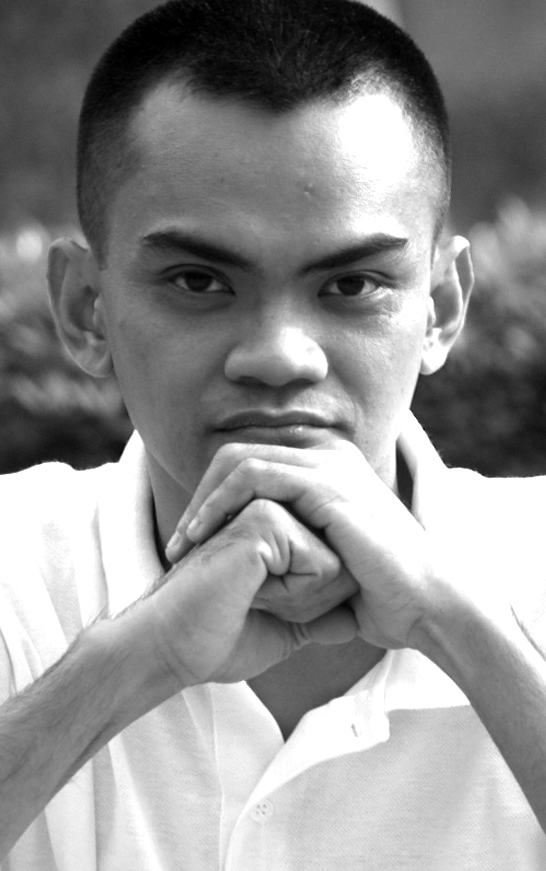
Radel Paredes
Closing today is the solo exhibition of my daughter Celina’s “In Se,” a series of still life paintings on big canvas which has been on display since last Saturday in the University of San Carlos Church of St. Arnold and St. Joseph at the Talamban Campus.
Celina is a graduating painting major at the same university and her solo exhibition is part of the requirements of her thesis, which is entitled: “The Metaphysics of Still Life: A Neo-Thomist Perspective.” As the title of her book suggests, her work, which combines research and a small body of work that reflects its conclusions, tries to understand the nature of painting, particularly still life painting, in relation to the objects that it represents.
In doing so, she borrows the approach of philosophy, particularly metaphysics, which focuses on the question of the true nature of reality. For example, it starts by asking, what is it that makes things real? Do things that we see now actually exist or are merely imagined?
Is there something beyond what we see in objects, a dimension that cannot be perceived by the senses yet knowable by the intellect? Metaphysics applies such questioning in order to get to the bottom of the nature of reality.
This process is very much the same with the act of painting. The artist also thinks hard on the nature of the objects that he or she aims to represent. What is it about the object that should be portrayed? Should the artist focus on imitating exactly how the object appears in nature, in other words, aiming for a photographic imitation? These questions also preoccupy the artist.
Plato once thought that painting is deceptive as painters during his time all aimed to fool people into believing that they are seeing an actual object when there is really nothing but pigments applied on a wooden panel. In fact, seeing art in general as mimetic (imitative or illusionistic), he thinks that it is dangerous in so far as it brings people away from knowing the truth.
Unlike Plato, Aristotle thought that the things we see in this world are not merely shadows of the true things that exist in a parallel spiritual “World of Ideas.” Everything, for Aristotle, consists of matter and form. Reality is the unity between the physical and spiritual, particular and universal, changeable and immutable attributes.
In order to explain how this came about, Aristotle looks at things as part of a whole hierarchical system of cause and effect, a motion that originated from some Prime Mover that Christians later thought to be God. Aristotle looks at objects from different levels of causality or what causes the thing to exist: its material properties, the process or work that produced it, the purpose for which it is made, and its relation to all other things or “beings” in the whole hierarchical order of things.
It is only by going through such levels of inquiry can one have a full knowledge of things. And ultimately, it is a knowledge that leads to the source of all motion, the Ultimate Cause or the Prime Mover that, ironically, should be unmoved.
This classical theory persists in the work of modern Christian philosophers such as Etienne Gilson, who was one of those French thinkers that countered the gloomy atheistic existentialism that dominated France after the Second World War.
Against the materialist and existentialist attack on “nature” or the old presumption of universal “essence” of things, the Christian thinkers revived classical metaphysics in the light of other modern thoughts, such as phenomenology, which restored the validity of subjectivity or experience that had been disparaged by a kind of rigid scientific rationalism which dominated Western thought since the Enlightenment.
My daughter borrows such insights from Gilson after she read his book “Painting and Reality.” Gilson reasserts painting’s “nature” as distinct from other arts and its unique way of reflecting reality. For him, this is particularly true in the case of still life or the depiction of immobile and trivial objects, like an arrangement of fruits and bottles or even the unarranged or merely “found” simple objects that the artist chose to depict.
These objects are at the bottom of the metaphysical pyramid of “beings.” And yet, by choosing to represent them, the artist forces us to ponder on such banal objects as equally real as the most abstract “beings” like love or justice.
My daughter calls attention to such simple objects like a kettle, a light bulb, or dress on a hanger by depicting them on big canvas that is customarily reserved for the more significant or “grand” subject matter, like historical or biblical theme.
Thus, she reverses the whole tradition which looks down on still life and relegates it to the small canvas as minor work. She paints them fast deliberately retaining the underpainting style to call attention to process as the “efficient cause” of painting.
The immobile subject is thus portrayed in a style that ironically implies the motion of the act of painting in particular and the motion of the universe in general.
The simple object as “thing-in itself” (in se is Latin for “in itself”) is given the grand treatment. Exhibited at the nearly empty mezzanine of the modern church, the work is given a solemn venue, appropriate for art that aims to raise our contemplation of what is seemingly banal and immobile to its sacred source, the Prime Mover.
Disclaimer: The comments uploaded on this site do not necessarily represent or reflect the views of management and owner of Cebudailynews. We reserve the right to exclude comments that we deem to be inconsistent with our editorial standards.
